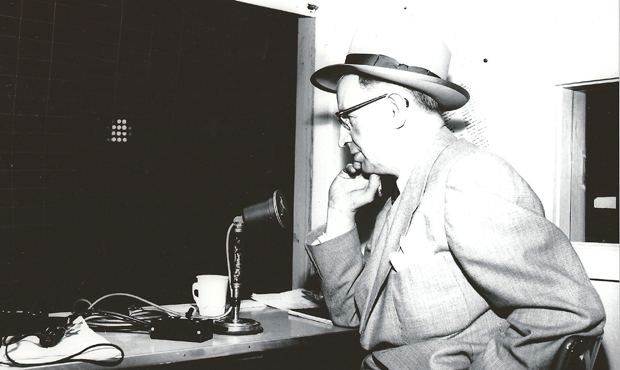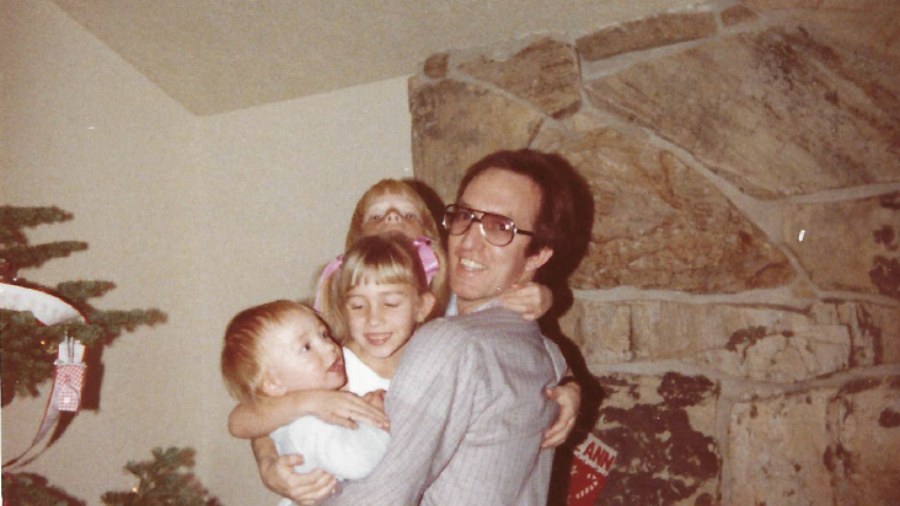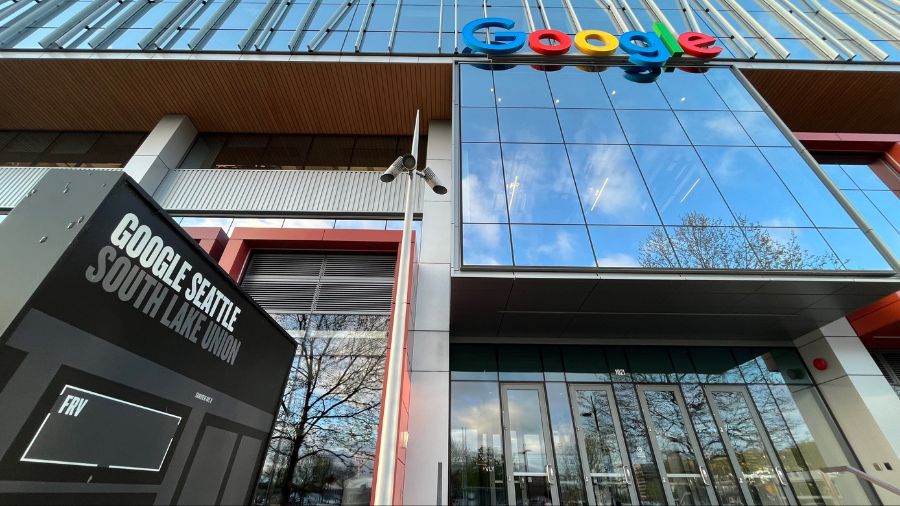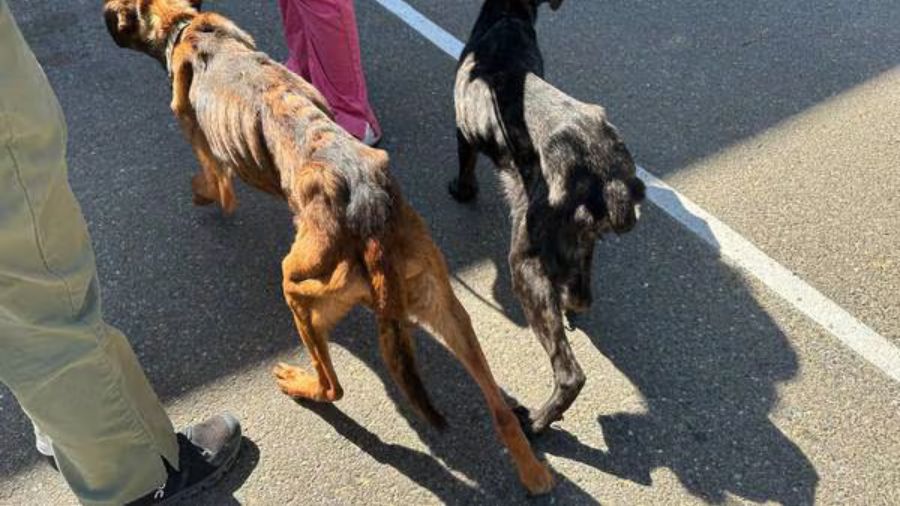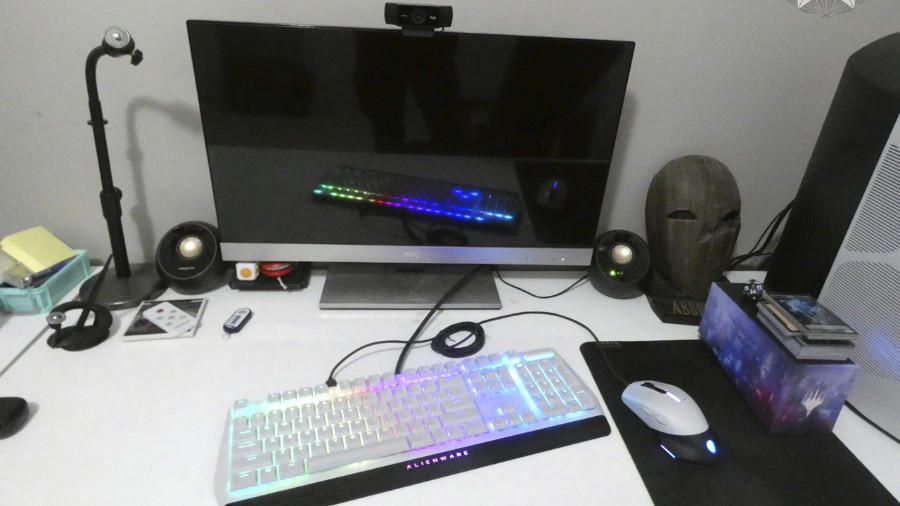Summoning the distant early voices of Seattle baseball radio history
Jun 26, 2019, 10:31 AM | Updated: 10:36 am
It’s not quite the dog days of summer yet, but everyone has pretty much given up on the Mariners for another year. That’s why it’s the perfect time to listen back to some earlier voices from Seattle baseball radio history.
Though it’s been nearly nine years since he passed away, I think it’s safe to say that everybody knows who Dave Niehaus is. Personally, whenever I feel down and I don’t have time to watch Good Night and Good Luck, I listen to Dave’s call of “The Double” from October 8, 1995 in the old Kingdome on KIRO Radio.
And maybe, because we’ve talked about him (and his roses, which still bloom in Wallingford) here a few times before, and because Seattle is a town that loves its baseball history, perhaps a lot of people even remember Leo Lassen?
Lassen’s famous “back, back, back, back, and it’s over!” home run call at Sick’s Stadium on Rainier Avenue was an earlier version of Niehaus’ “Fly away!” or Rick Rizzs’ “Goodbye baseball!”
For those who don’t know Leo Lassen, premier Northwest baseball historian David Eskenazi is always happy to explain.
“Ask a lifelong Mariners fan what their experience would’ve been like without Dave Niehaus, and you’ll get an idea of what pro baseball would’ve been like without Leo Lassen during that formative period [of the 1930s and 1940s],” Eskenazi said on Tuesday.
“He created really a whole generation or two of baseball fans here, a beloved figure,” he continued. “He was a radio announcer from 1931 to 1960. And you know he had an intricate knowledge of the game, he knew the rule book from cover to cover, but most importantly he was able to explain the finer points and the flow of the game to his listeners in a manner that made them love baseball more and gave them a richer experience as fans. He made better baseball fans with his skill.”
The short-lived Seattle Pilots era
In between Leo Lassen and Dave Niehaus, we had the Seattle Pilots for one Major League Baseball season 50 years ago. The Pilots’ broadcast team of Bill Schonely and future Hall of Famer Jimmy Dudley never had a chance to become “beloved,” because they only had a year on the air for KVI.
When Bill Schonely called a Pilots vs. Angels matchup late in the game (and late in the one and only season) at Sick’s Stadium on a Sunday afternoon in September 1969, it had a sort “future déjà vu” feel for anyone who’s ever tuned into an otherwise unremarkable Mariners game.
“In the seventh inning for the Pilots, who now need three runs to tie the California Angels, Don Mincher, Jerry McNertney and Fred Stanley,” Schonely says on the old recording, one of only a few of the Pilots’ that still exist. “Andy Messersmith has allowed the Pilots just one hit. They have managed a run. One run on one hit. Messersmith has struck out eight. He has walked three and he has hit a batter. Mincher swings on the first pitch. A drive to center field. Cowen underneath that baseball hauls it down and there’s out number one.”
The final score on that Sunday afternoon a half-century ago was the Angels 4, the Pilots 2. It was that kind of season.
In 1970, the Pilots, by then in bankruptcy, were sold and became the Milwaukee Brewers; Schonely was offered the job in Milwaukee, but instead became the voice of the Portland Trailblazers.
And now here’s the part of this story where we go “inside baseball.” Literally.
Before Niehaus, before Bill Schonely and Jimmy Dudley – even before Leo Lassen – the history of baseball on the radio in Seattle is little murky, or maybe that should be “staticky.” However, with a little digging in newspaper archives, it’s possible to shed at least some light on the “Pre-Leo” era of baseball voices around here.
Seattle’s first baseball radio broadcast
According to James Walker, who wrote a book a few years ago called The Crack of the Bat: A History of Baseball on the Radio, the first radio broadcast of any baseball game took place during the summer of 1921, when a guy named Harold Arlin broadcast the Pittsburgh Pirates on station KDKA.
In Seattle, the first mention that I could find of a baseball game broadcast on the radio here was April 4, 1922.
That was opening day for the Seattle Indians (who would later be renamed the Seattle Rainiers) playing the San Francisco Seals of the Pacific Coast League in San Francisco. Anyone who tuned in would have heard Seattle win.
But they wouldn’t have heard a broadcaster in San Francisco describing the action for the folks back home. The broadcast here likely consisted of a now forgotten person in a rudimentary radio studio in Seattle getting telegraph updates from the ballpark in San Francisco and then telling listeners what was happening.
Also, April 1922 is so early in radio history, the newspaper radio listings have no station call-letters, because different stations often broadcast on the same frequency and because most radios didn’t have dials yet. The newspaper listing would essentially say, “here’s what’s on the radio.”
From the newspaper archives, it was difficult to discern how much, if any, local baseball was on the radio in Seattle from 1923 to 1926. But, in 1925, Seattle station KFOA, which was affiliated with The Seattle Times, carried the World Series. This was also done via telegraph, and consisted of a broadcaster in Seattle describing the action based on telegraph updates from the ballparks of the Washington Senators and Pittsburgh Pirates.
For this first nationwide effort, Seattle was one of 73 cities where what was described as “Associated Press ‘radiomouths’” broadcast the action for local audiences. Pittsburgh won it in seven games.
Beginning with the 1927 Pacific Coast League baseball season, that same station, KFOA, began broadcasting all Seattle Indians road games. The announcer was named Arthur “Art” Lindsay.
Art Lindsay
Very little is known about Lindsay, and two of the most knowledgeable Northwest radio historians who were consulted for this story had never heard of him. But Arthur Lindsay was the voice of the Seattle Indians for at least two seasons, and in 1928, KFOA even carried home games, which was not exactly common in the late 1920s.
James Walker says that in those early years of radio, some team owners saw broadcasting as a threat to ticket sales. The concern was that potential ticket buyers would just stay home and listen on the radio. Others saw it as a great promotion tool to convince even more fans to get off their chairs and come to the ballpark.
For that 1928 season, Arthur Lindsay apparently put together quite a sophisticated production, with live and maybe even recorded (perhaps on a 78 rpm disc) sound effects.
In March 1928, the Seattle Times described Lindsay’s elaborate efforts:
On the afternoon of April 3, when the Seattle Indians open their first game of the season against the San Francisco Seals at the Bay City, KFOA will be on the air to give baseball fans of the Northwest a play-by-play report of the game. A direct wire from the field will carry the news to the KFOA studio, where everything in the way of ‘props’ will be used to give the radio listeners as graphic a presentation as possible. Art Lindsay, who handled the baseball broadcasts for KFOA last year, will be at the microphone, giving his graphic account of the out-of-town games. For the last month Mr. Lindsay has been experimenting with various radio ‘props,’ striving to simulate a ball striking the catcher’s glove, the sharp crack that indicates a long smash to the outfield, the roar of the crowd and all the other atmospheric effects that go toward making a “studio” game interesting.
The infamous Ken Stuart
For the 1929 season, it appears that the Indians moved to KOL, and a singer and announcer named Ken Stuart took over announcing duties. He was famous on the West Coast for something called the “Sunshine Program,” which featured philosophy, poetry and music.
Stuart became infamous in Seattle, as well as much of the United States, around the same time that he began broadcasting baseball games. The story goes that while relaying the action of a wrestling match, Stuart poetically described a particularly defeated wrestler as “needing an ambulance.”
Supposedly, dispatchers who were tuned in took Stuart at his word, and as many as seven ambulances showed up within minutes at the venue. The wrestler was fine, of course, but a wire service picked up the story and it was printed in newspapers all over the country. It went the 1929 equivalent of viral.
By 1930, the Indians and Ken Stuart had moved to KJR, where in July of that year, lights were installed at Dugdale Park (where Sicks Stadium was later built) and Stuart did the play-by-play for the first night game in Seattle baseball history.
A year later, Stuart was again the voice of the team when the 1931 season began. But sometime that summer, Stuart left town, and Leo Lassen took over.
James Walker says the tone and spirit of those early broadcasts was essentially not too different from what we hear today. There was time for telling stories, and time for filling the otherwise dead spots that are inherent in baseball with descriptions of tangential things, such as weather or what was going on in the stands. Technology-wise, Walker says, those early years were fairly primitive.
“Until you get to the late 1920s, there was no broadcast booth,” Walker said. “I mean, they were sitting in the stands or maybe a covered area of the stands, but they were just sitting out there,” Walker said. “Harold Arlin, when he did his first broadcast [for KDKA in 1921], he just brought a board, and a microphone, and an engineer, an amplifier, and the wires, and just set a board on a box seat, put his microphone on it, and began talking.”
Which sounds pretty much like what Rick Rizzs and the rest of the Seattle Mariners broadcast team are still doing, circa 2019, except maybe without that board stretched across a seat.

